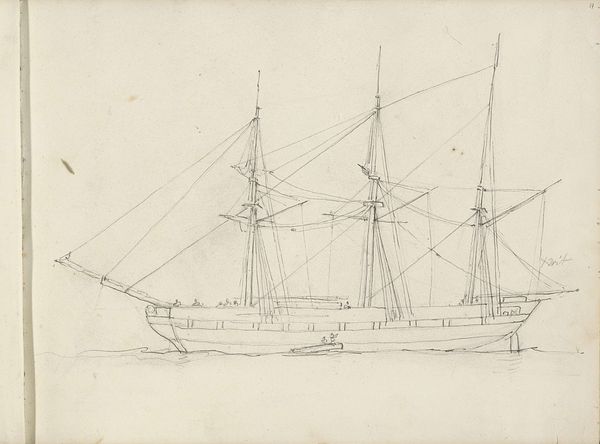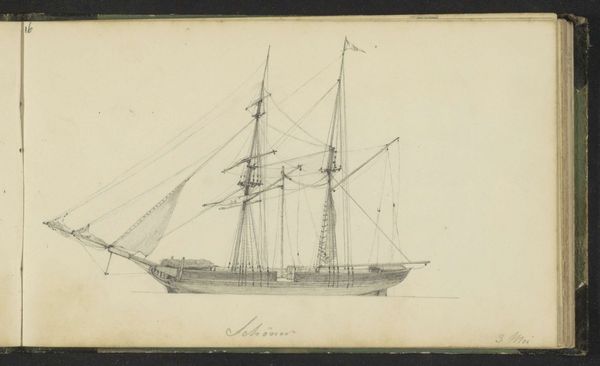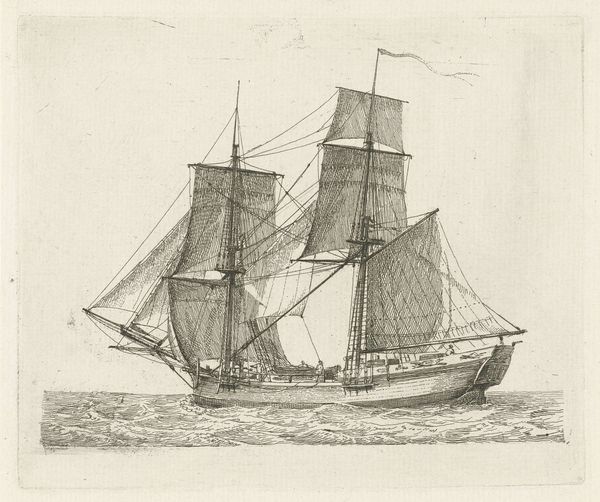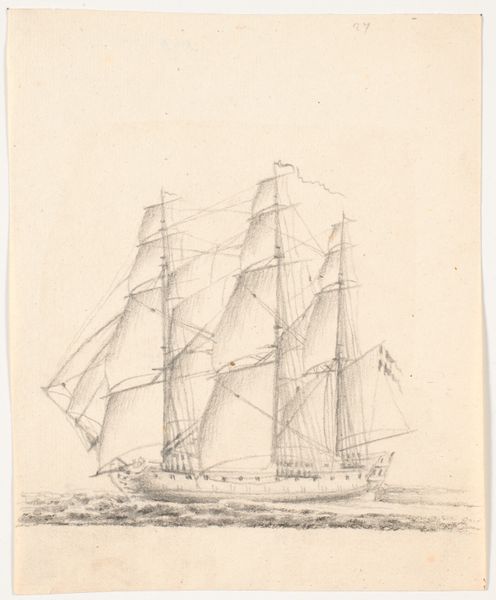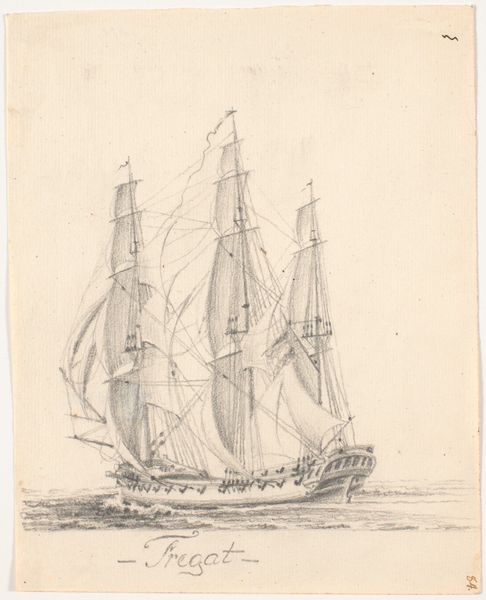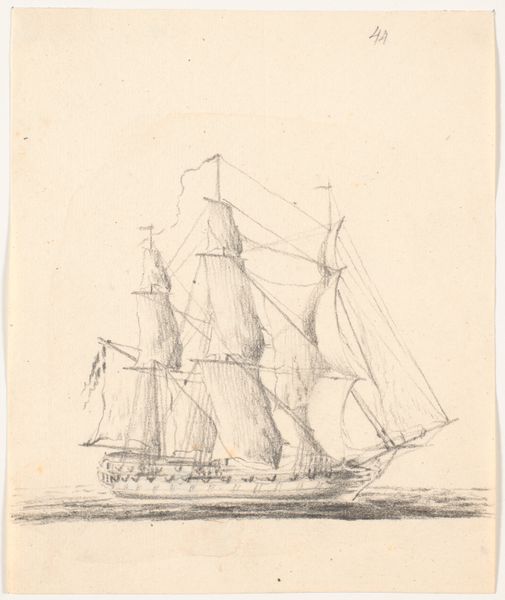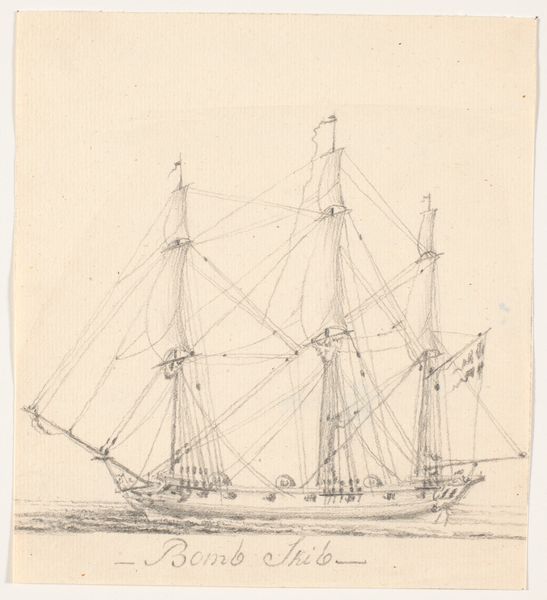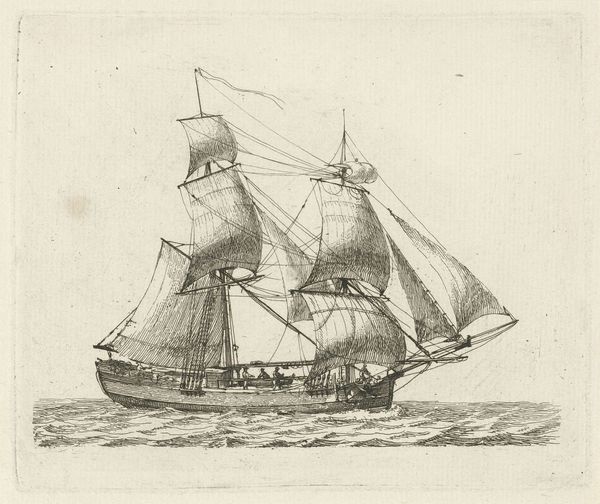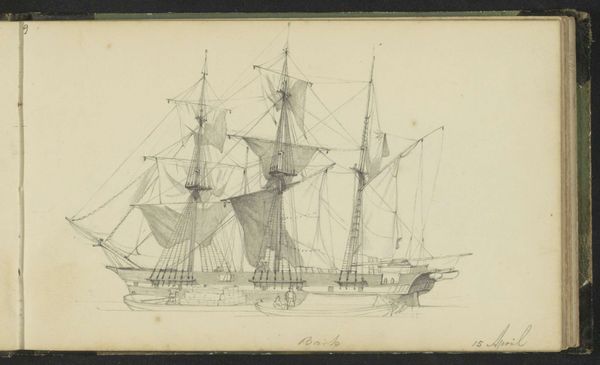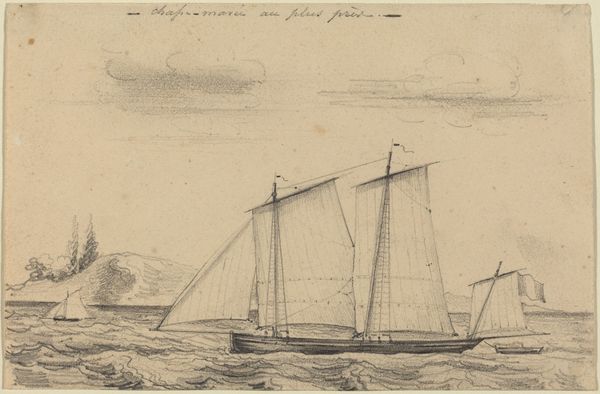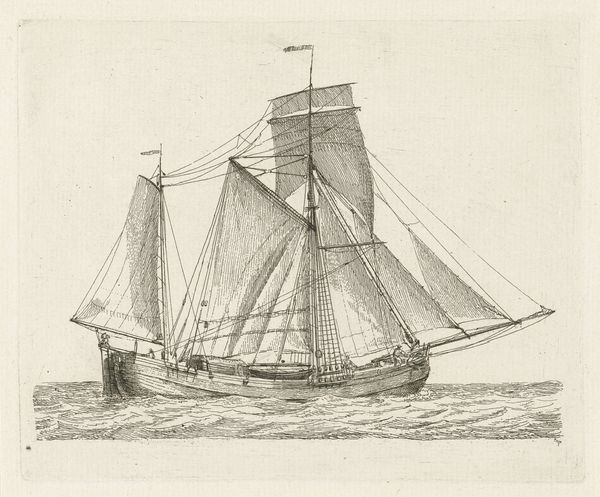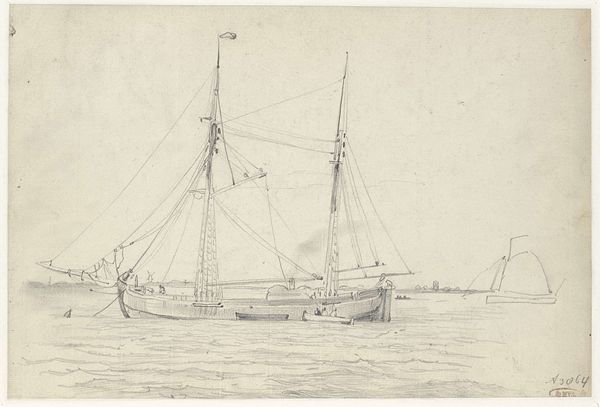
drawing, paper, pencil
#
drawing
#
pencil sketch
#
landscape
#
paper
#
romanticism
#
pencil
Dimensions: overall: 12.6 x 19.5 cm (4 15/16 x 7 11/16 in.)
Copyright: National Gallery of Art: CC0 1.0
Curator: Alright, let’s discuss this drawing titled "La Panne," created by Charles Meryon in 1839. It's rendered in pencil on paper, depicting a brig at sea. Editor: Wow, it's got a ghostly feel, doesn’t it? Ethereal almost. The pencil lines are so delicate; it looks like the ship is barely tethered to the water. A daydream at sea. Curator: I agree; there's an evocative fragility to it. Knowing Meryon’s background, the image carries substantial weight. His personal history intertwined with themes of naval life and societal constraint, something that seeped into his artistic practice, particularly later in his etching work which dealt frequently with the rapidly changing urban landscape of Paris, its political turmoil, and the city’s underbelly. Editor: You know, those sails feel heavy with unfulfilled dreams, don't they? It's odd, this ship, trapped in a kind of… potential energy? Curator: Indeed. We can unpack the term "La Panne" itself, translating roughly to "the breakdown" or "the failure." Contextually, and romantically, this references the inability of systems to do what they are meant to do, or provide—linking, of course, with theories of social progress at this historical juncture. One may see it as the failure of navigation, progress, and societal 'course-plotting.’ Editor: You put that so well, yes. I look at this and think of a ship adrift. It’s melancholic; a very pensive little drawing. Curator: Perhaps. But the pencil medium and landscape setting speak to the burgeoning Romantic movement and the social and cultural issues swirling in French society during the 1830s. Editor: Okay, now that's something I didn't initially pick up on. Very good point, really shifts my interpretation of it. So much packed in one fragile little sketch. Curator: Precisely, these considerations remind us to probe beyond initial aesthetic impressions, engaging with historical context. Editor: Thanks, that has been very insightful. Curator: My pleasure.
Comments
No comments
Be the first to comment and join the conversation on the ultimate creative platform.
